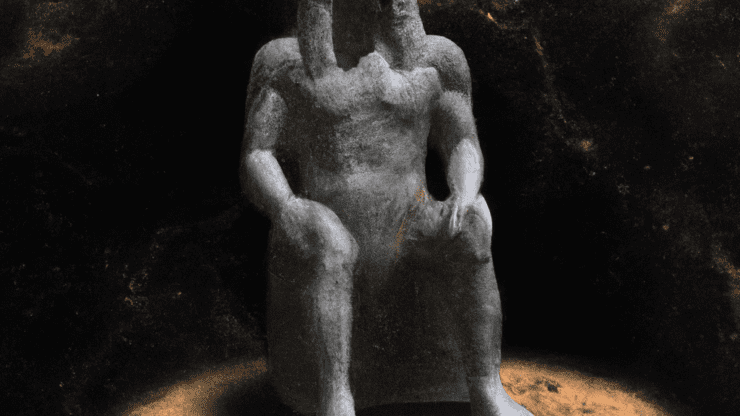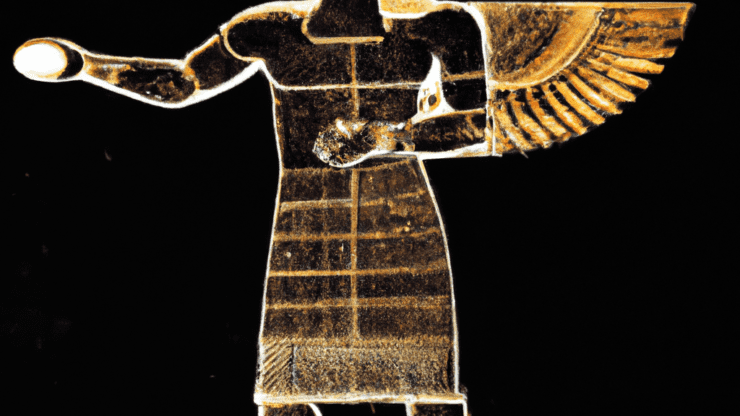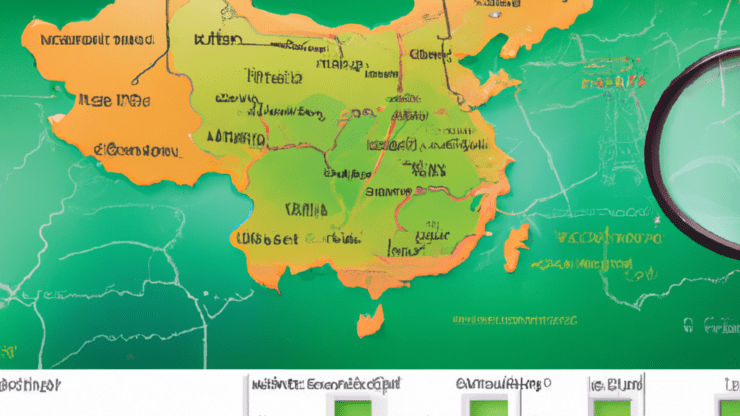Before we dive into the fascinating world of the Annunaki and their ancient origins, let’s take a moment to understand the intrigue and mystery that surrounds this enigmatic civilization.
Jump to Section
Introduction
The Annunaki have captivated the imagination of researchers, archaeologists, and ancient history enthusiasts worldwide. Scholars have unraveled fragments of their story through ancient texts, artifacts, and legends.
In this article, we will embark on a journey to explore the meaning and ancient origins of the Annunaki, shedding light on their significance in mythology, religion, and human history.
The Ancient Origins of the Annunaki
The Sumerian Connection: Exploring the Cuneiform tablets
The story of the Annunaki begins with the ancient Sumerians, who inhabited what is now modern-day Iraq. The Sumerians left behind an extensive collection of cuneiform tablets, providing valuable insights into their mythologies and beliefs.
These tablets mention the Annunaki as a group of deities who were revered as the creators of mankind and played a significant role in shaping human civilization.
The Babylonian Influence: Delving into Enuma Elish
As the Sumerian civilization declined, the Babylonians rose to power in Mesopotamia. The Babylonian creation myth, known as Enuma Elish, further expands on the story of the Annunaki.
According to Enuma Elish, the Annunaki were the children of Tiamat, the primordial goddess of chaos, and Apsu, the god of fresh water.
This myth not only solidifies the Annunaki’s divine status but also delves into their complex relationships and struggles for power.
Unraveling the Enigma: Debunking the Misconceptions
Common Misinterpretations: Separating Fact from Fiction
Over the years, numerous misconceptions and misinterpretations have surrounded the Annunaki, often leading to confusion and sensationalism. It is crucial to separate fact from fiction when exploring their origins and significance.
By critically examining the available evidence, we can dispel some of the common misunderstandings surrounding the Annunaki.
Uncovering the Truth: Examining Archaeological Evidence
Archaeological discoveries play a vital role in unraveling the enigma of the Annunaki.
On-going excavations and research shed light on the material culture associated with this ancient civilization.
Analysis of artifacts, architectural structures, and inscriptions provide valuable insights into their religious practices, social hierarchy, and daily life. By examining this evidence, we can gain a clearer understanding of the Annunaki’s historical context.
The Significance of Annunaki in Mythology and Religion
A Pantheon of Gods: Understanding the Annunaki Hierarchy
The Annunaki were not a homogenous group of deities but rather a complex pantheon with hierarchies and diverse roles.
Each deity had their own domain and influence, ranging from Anu, the supreme god, to Enlil, the god of wind and storms, and Enki, the god of wisdom and creation.
Understanding this hierarchy provides insights into the ancient Mesopotamian belief system and cosmology.
The Annunaki in Ancient Mesopotamian Religion
In ancient Mesopotamian religion, the Annunaki played a central role as intermediaries between gods and humans. They were believed to possess immense power and knowledge, guiding humanity in various aspects of life.
The temples dedicated to the Annunaki served as sacred spaces where rituals were performed to seek their favor and blessings.
Comparing the Annunaki to Other Mythological Beings
While the Annunaki are unique to Mesopotamian mythology, parallels can be drawn between them and other mythological beings from different cultures.
Comparisons with the Greek Titans, Egyptian deities, and Norse gods shed light on the universal themes and archetypes present in human mythologies throughout history.
Annunaki Artifacts: Clues from the Past
The Secrets of Ancient Art: Analyzing Sumerian and Babylonian Artworks
Artworks from the Sumerian and Babylonian civilizations offer valuable insights into the symbolism and representations associated with the Annunaki.
Depictions of divine beings and mythological scenes in sculptures, reliefs, and seals provide visual narratives that enhance our understanding of their significance.
Iconic Symbols: Decoding Annunaki Imagery
The Annunaki left behind a rich repertoire of symbols and iconography that enrich our understanding of their culture.
Symbols such as the winged globe, the caduceus, and the seven-pointed star have deep-rooted meanings associated with the Annunaki and their divine attributes.
Decoding these symbols helps in unraveling the secrets of their ancient civilization.
The Influence of Annunaki on Human History
Technological Advancements: Did the Annunaki Share Knowledge with Humans?
Some proponents believe that the Annunaki imparted advanced knowledge and technology to humanity, contributing to the rapid development of civilization. Theories suggest that advancements such as agriculture, architecture, and astronomy can be attributed to their influence.
Exploring these claims allows us to assess the impact the Annunaki may have had on human progress.
Ancient Astronaut Theory: Exploring Extraterrestrial Connections
The Annunaki have also become a focal point of the Ancient Astronaut Theory, which proposes that extraterrestrial beings visited Earth in the distant past and influenced human development.
Proponents of this theory argue that the Annunaki were extraterrestrial beings who played a pivotal role in shaping human history.
While controversial, this theory raises intriguing questions about human origins.
The Legacy of the Annunaki: Modern Interpretations
Pop Culture Phenomenon: Annunaki in Movies, Books, and Games
The enigmatic nature of the Annunaki has captured the imagination of popular culture. They have become a source of inspiration for movies, books, and video games, often portrayed as ancient astronauts or godlike beings.
These modern interpretations provide entertainment and fuel further curiosity about the Annunaki.
Conspiracy Theories: The Annunaki and the New World Order
Conspiracy theories surrounding the Annunaki abound, alleging secret societies, hidden agendas, and global control by this ancient civilization. While these theories lack substantial evidence, they illustrate the enduring fascination and mystique that surrounds the Annunaki.
Conclusion
The Annunaki continue to be a captivating and enigmatic part of our ancient history.
By exploring their origins, significance in mythology and religion, and their influence on human history, we gain a deeper appreciation of this complex civilization.
Whether considered as mythical deities, ancient astronauts, or symbols of power, the Annunaki will continue to intrigue and inspire generations to come.
FAQ
Who were the Annunaki?
The Annunaki were a group of deities in ancient Mesopotamian mythology. They were revered as the creators of mankind and played significant roles in shaping human civilization.
What is the significance of the Annunaki in mythology and religion?
In ancient Mesopotamian religion, the Annunaki held a central role as intermediaries between gods and humans. They were believed to possess immense power and knowledge, guiding humanity in various aspects of life.
Are there any connections between the Annunaki and extraterrestrial beings?
The Ancient Astronaut Theory proposes that the Annunaki were extraterrestrial beings who visited Earth in the distant past and influenced human development. While controversial, this theory raises intriguing questions about human origins.
What is the legacy of the Annunaki in modern times?
The legacy of the Annunaki extends into popular culture, inspiring movies, books, and video games. Additionally, conspiracy theories speculate about the Annunaki’s involvement in secret societies and global control.
Is there any archaeological evidence supporting the existence of the Annunaki?
Archaeological discoveries, such as cuneiform tablets and ancient artworks, provide valuable evidence of the Annunaki’s existence and their significance in ancient Mesopotamian civilization.
Greetings fellow space travelers, I am Draco Blaze, creator of Alienated Media who is passionate about exploring the unknown and writing about my experiences with extraterrestrial life.
My focus is on alien encounters and creating thought-provoking sci-fi short stories that transport readers to new worlds and realities.
Feel free to contact me at [email protected].





